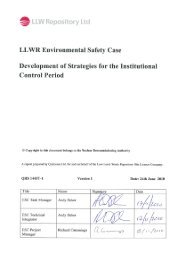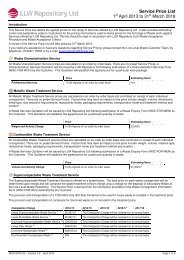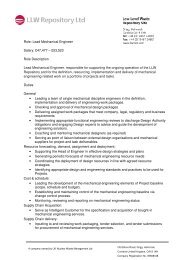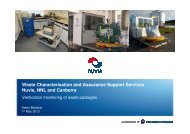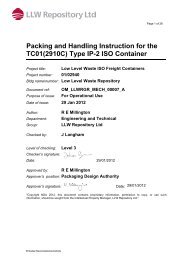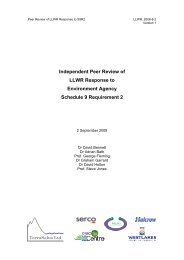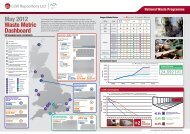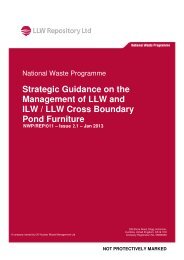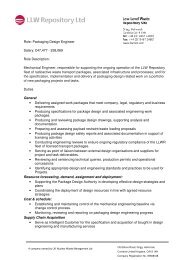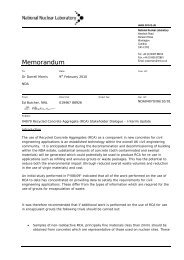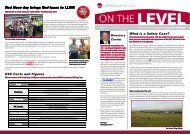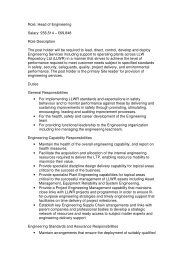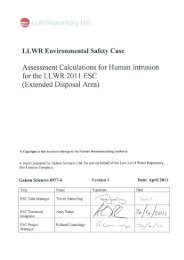Halcrow, Coastal Studies Forward Programme Data Compilation ...
Halcrow, Coastal Studies Forward Programme Data Compilation ...
Halcrow, Coastal Studies Forward Programme Data Compilation ...
You also want an ePaper? Increase the reach of your titles
YUMPU automatically turns print PDFs into web optimized ePapers that Google loves.
The model is based upon an evolution equation for water waves, which has beendeveloped from the mild slope equation by using the perturbation method (Li1994). The mild slope equation, first derived by Berkhoff (1972), is widely used incoastal engineering. During its development, the model has been tested againstexperimental data and has undergone a process of calibration and validation.MWAV_REG has been extensively and successfully used on coastal studiesthroughout the world.Table 2.1 <strong>Coastal</strong> process models usedModel Type Model Used PurposeWave modelCurrentmodelCross-shoremodelLongshoremodelMWAV_REG/MWAV_TRNDAWNCOSMOSKamphuis equation(Kamphuis 2000) Assess wave climate (i.e. frequency and wavelength) Provide regional wave climate for wave-current interactionmodelling Transform waves inshore using bathymetry data to determineaffects of defraction and refraction. Used for sedimenttransport assessment by cross-shore and alongshore models Assess tidal currents and suspended sediment movement innearshore Identify areas of onshore-offshore sediment transfer Assess cross-shore response of beach sediments to waveconditions Identify key zones of sediment transport Assess longshore movement Assess spatial and temporal variations in ratesUsing the transformation results from MWAV_REG, a second model known asMWAVE_TRN was used to transform the offshore wave data inshore and provideinshore wave time series. Waves were transformed inshore to the –4m OD and 0mOD contours, taking water level variations during the period into account, so thattime series data were produced for two points on each profile. These two dataseries have been created so that any difference in transport along both the lowersand beach and the upper gravel beach can be examined.(b) DAWNMathematical modelling of tidal currents was undertaken using <strong>Halcrow</strong>’s depthintegrated 2D tidal modelling suite known as DAWN (Dispersion Advection WithNesting), which is designed to model hydrodynamics, water quality and sedimenttransport over a two-dimensional plan of the study area. It is a depth-integratedDoc No 1 Rev 2: Date: May 2010 10



